Podcast: Play in new window | Download
Show Notes
In this episode, we talk about what makes a low maintenance landscape.
- Mindset – Life > Yard
- Healthy plants
- Healthy Soil
- Right plant right place
- Natives, adapted
- Perennials
- Grouped plantings vs isolated
Links for today’s episode:
- Launch Partay!
- How to save 27 hours of work
- Consult with Ben
- Paul Tukey
- Rolling River Nursery
this is the aesthetic ecosystems podcast
I’m Ben Hale your virtual design guide
to help you and your family have a
healthy beautiful landscape with less
work what’s up and welcome to episode 2
of the aesthetic ecosystems podcast
thanks for joining me today
today in episode 2 we’re gonna be
talking all about what makes a
low-maintenance yard so what can we do
with your landscape to turn it into one
of these low-maintenance yards and how
can we make your yard better so we can
change your life for the positive so a
few things we’re gonna be talking about
today are your mindset which we talked
about in episode one as well but I want
to touch on it again because it’s so
important and it’s something that’s
easily glossed over because we were
talking about landscapes here right your
yard what does your mindset have to do
with it so we’re gonna touch upon that
we’re in talk about healthy plants makes
sense and we’re gonna be talking about
healthy soil because healthy soil makes
a healthy plant we’re gonna be talking
about how to put the right plant in the
right place because that’s very
important and that causes a lot of
problems as well we’re gonna be talking
about grouped plantings instead of
isolated plantings using annuals versus
perennials using plants that require low
resources using full coverage in your
yard and what that means as well as
reducing lawn maintenance in the last
piece we’re going to touch on is good
transitions in your yards because
usually at the border of your plantings
or whatever border it is in your yard
those are generally speaking the highest
maintenance areas so let’s get right
into it stepping back to the first thing
here mindset your mindset for your yard
is really important we just spent a
whole episode talking about this in
episode 1 if you happen to miss it I
highly recommend you go back and listen
to episode 1 and learn about how
important mindset is
for your yard and I even make the
quantum leap to say that the right
mindset with your yard can change your
life that’s what this podcast really is
all about is how do we free up more time
in our life our busy lifestyle
so we can use that time for things that
are valuable whether that’s spending
more time with your family or your loved
ones or whether that’s using that time
to work toward your dreams and goals but
the most important thing is to not waste
the extra time that we can earn by
changing our landscape it’s very
important because landscapes are
beautiful they can be rewarding spaces
that are fun that are inviting that are
just places to go relax or to de-stress
and that’s what I want your yard to be
generally speaking most people’s yards
can be very relaxing places to hear the
birds to listen to the breeze and to
just stop and enjoy things but at the
same time a lot of those landscapes that
we think about when we think about a fun
relaxing place try and think about maybe
it’s your yard or somebody else that you
know somebody that lives next door down
the street try and think about a yard
that’s just a beautiful relaxing place
you’re kind of envious of it maybe or
you’re very happy about it if it’s your
own yard
think about that place and I can bet you
that that place requires a decent amount
of maintenance to take care of because
most landscapes right now most people’s
yards
you go to an arboretum or wherever most
landscapes that are curated or designed
they’re pretty high maintenance places
whether they require certain timely
inputs like mowing the lawn
if you skip you know a few days of
cutting the grass in the middle of the
growing season it can make a big
difference and you might get some angry
knocks on your door or a planted space
like a garden a appealing garden those
places require a lot of work just to
keep weed free healthy plants and
properly maintained plants
what we’re talking about here is
transitioning spaces like that into
what’s still a beautiful place that
place that you desire to have or you’re
envious of but make it in a way that
doesn’t require so much work and this is
very very possible with proper design
and proper thought and planning going
into your landscape so again when we
plan things properly we can have the
right type of landscape that is
rewarding that is helpful to de-stress
or to relax or just to have fun and it
would be a place to get away for a
little bit to have that space and do it
in a way that frees up time of
maintenance and work so you can use that
time more valuable in whatever way you
think in your life so that’s what the
whole mindset episode was about in a
nutshell and I get into it much more
deeply in episode one so again I
recommend you go listen to it if you
haven’t already to really develop the
right mindset to move forward in
designing the right landscape because
that’s the really the driver to having
the right type of landscape that doesn’t
just suck away all sorts of hours of
your year just to maintain it and keep
it appealing so moving right along once
we cover the the mindset piece is
healthy plants now this may seem a
little odd like of course you want
healthy plants in your landscape but
most often even if a plant looks healthy
on the outside it might not actually be
a healthy plant we want plants that
thrive in our landscape that they just
feel comfortable where they are they
have everything they need right at their
root tips I guess and and they can just
grow without a lot of inputs and
maintenance from you and you don’t have
to keep an eye on them to make sure they
have the right nutrient load or the
right amount of water or the right
amount of sunshine or whatever so that’s
what I mean by healthy plants there is a
volumes and volumes of
information that go into making healthy
plants from different horticultural
guides to scientific guides or whatever
but really what we’re talking about is
getting the plants what they need when
they need it there’s some obvious basics
here the most often you think of water
or maybe even fertilizer for your plants
in your landscape and generally speaking
what you want to do here is is for
whatever plant you have in your
landscape ideally this is before you
plant it that you would do this is to
make sure you have the right resources
already available for that plant when
you need it so think of water does it
have the right amount of water at the
right frequency sometimes different
plants require different seasonal
amounts of water do you have the right
nutrient load so here I’m talking about
available nutrients in the soil already
not necessarily fertilizer inputs
generally speaking we want to avoid the
use of fertilizers because it creates an
unhealthy ecosystem for your plant and
the soil below your plant so do we have
the right nutrients in your soil and
there are tons of ways to figure this
out really intending this to kind of be
a general overview episode the in-depth
episodes will come in the future when
we’re talking about all sorts of
different stuff and getting super
technical and nerdy for the people that
want to get super technical and nerdy
but for now this is kind of a top-level
overview so does your soil have the
right requirements generally speaking if
you have good healthy organic soil you
have the right soil for plants that
thrive in good healthy soil some plants
actually thrive in very poor soils
whether that be a sandy soil or a clay
soil or whatever but low nutrient soils
and so you figure out okay do I have the
right plants if I have low nutrient
soils in my yard maybe I can keep that
yard just the way it is and plant the
right plants that can already thrive in
that situation and again like I just
briefly mentioned maybe you have a sandy
soil so you plant plants that work
best and Sandy conditions or if you have
very hard dense clay maybe it’s so tough
that it even cracks up in the in the dry
part of the year well you can plant
certain plants that do well in those
conditions and maybe yeah that maybe
they go dormant during those times most
likely they do unless you’re talking
about a tree or but they’re well adapted
so they don’t need to require irrigation
or whatever to keep it going
aside from soil fertility there’s tons
of other factors actually I did I didn’t
mention pH as well so there’s even just
in soil there’s tons of factors that go
into what’s the right plant and again
this gets very technical very fast
sometimes but is it’s good things mainly
to keep in mind as you’re going
aside from soil we can also look at
other considerations what are the right
amounts of Sun you’re getting for your
plant what’s the right solar aspect is
another way to phrase that so maybe your
your plant prefers morning sunshine but
not middle of the summer heat with the
sunshine so putting the right conditions
in place for your plant already make
sure that the plant will thrive moving
on to more discussion about healthy soil
healthy soil is a again a whole chapter
in itself but what I’m talking about
here is soil life so there’s a huge
difference between dirt and soil dirt is
the chemical chemical makeup of your
soil what determines its pH what
determines its clumping sighs what
particles are made up of it that sort of
thing so you can have clays you can have
sands you can have loam which is kind of
a mixture of middle particle sizes and
then you can go into what type of
bedrock supports your soil so that
generally determines your pH and what
minerals are present so there’s a lot
that goes into the chemical make
of your soil but that forms a basis to
the health of your soil itself so just
all those chemical pieces you’re talking
about the dirt piece so if you think of
dirt you’re looking at an empty field
that’s in poor condition and in the
summer you know you get those ugly
cracked up appearance of it and your mud
right but when you have a really good
healthy soil take a step into the forest
and you scrape up some leaves and you
get that rich smell that’s what good
healthy soil is is it’s full of life so
this is bacteria fungi or fungi which
ever you prefer to say and all sorts of
microorganisms from nematodes to
crustaceans those are fundamental parts
of a good healthy soil ecosystem that
supports plant life I love talking about
good healthy soils so I’m going to try
and limit myself here but just think of
it this way as an example fungus for
soil health is really really important
fungi can form these expansive fungi
fungal networks that reach very broadly
and communicate to each other through
chemical transport and they connect with
plant roots in a healthy soil ecosystem
to expand the root network by multiple
times what the physical plant structure
can reach and so it can reach all these
different nutrients to help support the
plant growth as well as to transport
water from all these little micro soil
particles throughout your garden space
and so just by having fungi present you
greatly enhance the reach of the roots
of your plants and the adaptability to
different conditions and in access to
nutrients so this stuff is crucially
important to the health of your plants
so healthy soil is not only the chemical
that most often we think about but also
does it support the right micro organism
life to help boost the health of our
plants this all kind of leads into
having the right plant in the right
place so I kind of touched upon this
with healthy plants when we’re talking
about does it have the right conditions
does it have enough Sun and enough water
at the right time of the year well you
can also when you’re planning your
garden make sure you select the right
plants for the conditions that are
present in your garden so this is more
of a planning piece as opposed to a
reactive piece if you already have
established plants but when you’re
planning out your garden are you
planning to spruce up your garden or
expand it in your yard make sure you
have the right plant that’s adapted to
the conditions so if you have take for
example our our front house faces south
and we have a bank that slopes away from
our house so in the middle of the summer
the front of our house just gets just
pounded with hot summer sunlight and the
plants that we put there they have to be
able to withstand that heavy sun
exposure during the summer but on the
flip side there’s a benefit to that
where during the winter it actually
absorbs a lot of heat from the winter
Sun and boosts the soil temperature
right below it higher than say our
backyard that doesn’t get any Sun during
the winter so having the right plants to
go in that situation will help those
plants thrive and help your landscape
more look more beautiful because those
plants are in the right spot with the
right condition to feel healthy and you
don’t have to sit there and tend after
your plans now when you’re thinking
about the right plants in the right
place you can also consider the the
plants that are best adapted to your
local climate so not only the specific
conditions of your garden but also the
regional climate you’re talking about a
lot of times most people think of
natives I love good native plants
as long as they’re aesthetically
pleasing to go in your garden if you
plant something that doesn’t look great
you’re not gonna like your garden right
so we’re talking about plants that look
beautiful but maybe there are also
native plants so one of my favorites for
our area in Ohio is echinacea it’s
quickly becoming a popular landscape
plant as well so this is a native
Prairie plant actually that’s grown
natively across much of the eastern in
middle u.s. States and echinacea has
these beautiful deep pink purple blooms
throughout the latter half of the summer
all the way into early fall and it’s
just this wonderful pop of color they’re
very well adapted to clay soils and they
can tolerate a good amount of heat and
so they just do well even with being
left alone and you don’t have to sit
there intent to them like you would say
to a rose or some of your annual plants
that you might want to put in that space
but aside from natives you can also
consider well adapted exotic plants and
this can be a difficult space because
there are a lot of plants in the
horticultural space that you might find
in your nursery that can be invasives we
don’t want to be putting in plants that
are going to spread to roadsides and and
all over through a native ecosystems
because we can we can really be damaging
a lot of our regional space but if
you’re talking about well adapted exotic
plants these might not you know spread
expansively or whatever and they might
provide a lot of beauty to our space so
going along the line of having the right
plant in the right place we also can
think of the type of plant
so is this an annual plant or a
perennial plant and I’m kind of picking
favorites here and I kind of I mean a
lot
I really prefer perennial plants
perennial plants are plants that come
back year after year after
year and so when you’re thinking about
low maintenance saving time in your yard
of course you would want something that
comes back year after year so the real
trick is picking the plants that are
beautiful give you the right amount of
color and texture in your yard and
landscape and select those perennials
that give you what you want
the reason annuals have kind of become a
huge favorite over the past probably 200
years is because some annuals they are
just beautiful so think of like a zinnia
that that just gives you a giant pop of
color or you know whatever your favorite
flower is odds are it could be an annual
plant because annuals just can provide
such vibrant beauty but unfortunately it
doesn’t last so after it blooms the the
plant generally dies goes to seed and
starts its lifecycle over by reseeding
now with that said if you have self
seeding annuals so if the seeds take
readily and can grow back the next year
without much work those are the kind of
annuals that I love because you can
still get that pop of beauty that you
generally want with an annual and it’ll
kind of take care of itself by dropping
its own seeds in the same place or
nearby and coming back the next year
without you having to sit there and
cultivate it or plant a new plant each
year or go to the nursery and buy flats
of the annuals and it’ll just kind of
take care of itself those are the kind
of annuals that I like but perennials
they’re generally speaking you plant it
once and you’ll get several years of
beauty out of it now there’s a lot of
short-lived perennials where or
perennials that kind of kind of slowly
regress if you don’t divide them
occasionally and that sort of thing but
again if you’re talking about having to
divide one plant every three years let’s
say versus replant every single year for
three years I’ll choose the first one
where I can have a perennial it
established itself it grows well and
then maybe some fall or winter or
whatever
I go back and I pull part of that plant
away to let the the remaining piece grow
back with more vigor and I can even
spread the the other piece to a new area
if I want to get more beauty so that’s
kind of why I like perennials is they’re
generally speaking a lot less work given
that you’ve provided them with all the
conditions already that we’ve talked
about now when it comes to plants
generally speaking as well most plants
don’t grow well as isolated specimens so
what I’m talking about here is if you
think about like you go downtown
whatever city you want to talk about
right you you’re walking down the street
you see these trees lining the street a
lot of times they’re in this about three
foot by three foot square of concrete
that’s been removed to allow the space
of one isolated tree to grow so you can
have a little bit of nature in your city
but not too much right so that’s an
isolated planting now you step over into
suburb yard you kind of see the same
thing an expansive lawn it kind of
punctuated here and there with a tree
the specimen tree here or there or
wherever they’re kind of randomly spaced
well most of those plants they can grow
like that but they generally do better
in groupings and it also helps with your
maintenance to put them in groups as
well so specifically what I’m talking
about here by reducing your maintenance
by grouping is if you have garden areas
kind of general garden areas throughout
your lawn and reduce the amount of
spaces you have to mow around it will
help your maintenance overall you can
match one type of work so garden
maintenance into a specific area and you
can batch other types of work such as
mowing into other areas specifically
what I’m thinking about here is picture
to the yard where
there’s say the front yard has three to
five individual trees spaced throughout
the yard they provide beautiful shade
you have a nice lawn underneath it’s
nice for sitting and relaxing or kind of
playing ball or whatever but when you go
to mow that yard you kind of have to
zigzag around the different trees and
that takes a lot of time and effort just
to adjust to where the trees are instead
if you had those trees surrounded by a
garden area you can mow around the one
garden instead of having to mow around
the three to five trees instead and that
allows your garden to kind of be the
space for the trees and to also
architectural ehelp the planting by
providing various heights of plantings
as well so you might have a few shrubs
in this garden space along with your
three landscape trees and and then
various lower growing herbaceous plants
underneath it and so you get very
texture throughout the year as well as
varied color most likely and you get a
beautiful space with a beautiful garden
so group plantings really help
aesthetically from the visual pleasant
experience of your garden space they
help from a maintenance standpoint by
reducing the amount of variation within
specifically the mowing piece by having
to mow around various pieces of your
landscape instead of just mowing a
specific block of space and they also
help with the health of your plants
generally speaking so because plants are
best adapted to growing your other
plants generally speaking they actually
prefer that because they’ve evolved that
way now we’ve already gone through
several tips and at this point we’ve
actually spent a good chunk of time so
what I’m doing here is I’m batching this
low maintenance plants in low
maintenance yard topic into two episodes
so today what we’ve covered is very
importantly the
mindset that your life is more important
than your yard and having that right
mindset really predicates whether or not
you have a low-maintenance yard because
without the intent there to have the
low-maintenance yard and putting
priorities on your life you’re not going
to have a low-maintenance yard because
it’s not at the forefront of your
priorities when you’re designing your
landscape or maintaining your landscape
having healthy plants so providing the
space for the plant that is it is best
adapted to helps create a healthy plant
without extensive inputs on your part
having healthy soil as well provides the
right environment for most plants to
thrive by having the right amount of
soil life as well as chemical makeup of
your soil to provide the right
foundation for your plants having the
right plant in the right place so giving
the right conditions knowing those
conditions of your garden and then
selecting the right plants that are best
adapted to that as well as selecting the
plants that are most aesthetically
pleasing to you having grouped plantings
versus isolated plantings really reduces
your maintenance schedule and what as
well as boosting the health of your
plants generally speaking and in between
they’re also having perennial plants
versus annuals or self-seeding annuals
but generally speaking the plants that
come back year after year without you
having to require tons of inputs so next
episode we’re going to be jumping into
what are some of the low resource plants
what makes a low resource plant
designing full coverage into your garden
reducing lawn maintenance and developing
good transitions for your landscape so
we’ll get into those later pieces in the
next episode and really kind of provide
you a holistic picture of a lot of the
elements that go into making a
low-maintenance yard so before we wrap
up I just want to remind you that if
you’re interested in saving time now
with out having to make
significant changes to your yard itself
just by making simple habit changes I
have put together a free resource for
you already that you can go get at
aesthetic ecosystems calm slash to seven
hours to seven hrs and that will give
you three specific ways you can save 27
hours this season on your landscape make
sure you go over to hit subscribe and
whatever you’re listening on here and to
get updates on future episodes okay now
it’s time to talk about the launch party
guys excuse me not party but partay the
launch party is for the first two months
of the show from March 11th through May
help spread the word spread the word
about the show I really appreciate your
enthusiasm and interest in this show and
I want to get you guys involved and have
some fun while we’re doing it so this is
a chance to have some fun too for us to
get connected to win some prizes and
let’s talk about the prizes before we
talk about what we’re doing so what are
the prizes weekly I am offering a free
consultation with me Ben Hale which is
normally a $99 value so one person each
week that gets involved in the launch
partay
gets a free consultation I’m also giving
away a free offer for one of my ebooks
ten ways to get more beauty with less
work which is the $19 value next the
grand prize there is only one of these
we’re giving away through this whole
launch party so at the end of the launch
partay the organic lawn care manual by
Paul to key so Paul to key himself has
offered to give away one free book to a
lucky winner that’s getting involved in
this launch party and this book is all
about how to manage a healthy lawn from
anything from a golf course style on to
your low maintenance lawn which of
course is something I prefer here on
this show right
I own this book I’ve read this book
multiple times I’ve given it away it’s a
kind of a tattered and worn version that
I have and I use some of these practices
in my own lines so I love this book and
I highly promoted as
and you’ll hear me talk about it
throughout the show but Paul Tookie has
been kind enough to offer a copy of his
book as a grand prize and there’s also a
special surprise for everybody that’s
going to be getting involved in the
launch partay
the rolling river nursery out of
California has offered a special
surprise for everybody that’s involved
the rolling river nursery is a USDA
certified organic nursery so I went
online and I looked around for nurseries
that have online availability ship
through the continental US and have some
great offerings and rolling River
nursery is being kind enough to become
involved with our launch party and
they’re not only are they online
availability but they also are certified
organic which means they don’t use any
harmful herbicides or pesticides that
you have to be concerned with your
family about and so what you’re getting
is a safe and healthy plant they also
offer a ton of edible plants and trees
and shrubs cacti and succulents so they
offer several trees and shrubs that are
adaptable throughout the most of the
United States so definitely worth
checking them out and in addition these
guys are also involved with a non-profit
in Southern California to help local
food movements called planting justice
org so if you want to learn more about
them you can go to rolling River nursery
com and I also want to give a shout out
to Paul to Kies website for his organic
lawn care manual and his other works is
Paul to keep calm PA UL t uke Y and to
sum up guys okay you want to learn how
to get involved with this launch party
go over to aesthetic ecosystems comm
slash pod launch and that’s P o dl au n
CH there’s a link in the show notes and
that’s that’s gonna give you all the
instructions on how to get involved
there’s two ways specifically to get
involved one is through sharing with
your peeps on Facebook and the other is
through leaving a review on iTunes
both of these are gonna help spread the
word about the show and get other people
other friends listening to it as well
and I sure appreciate your help here and
and likewise this is gonna be a fun time
so so going over and to aesthetic
ecosystems calm slash pod lunch to get
involved
so thanks for tuning in and make sure
you live with passion and make tomorrow
better than today
[Music]you


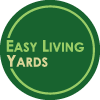
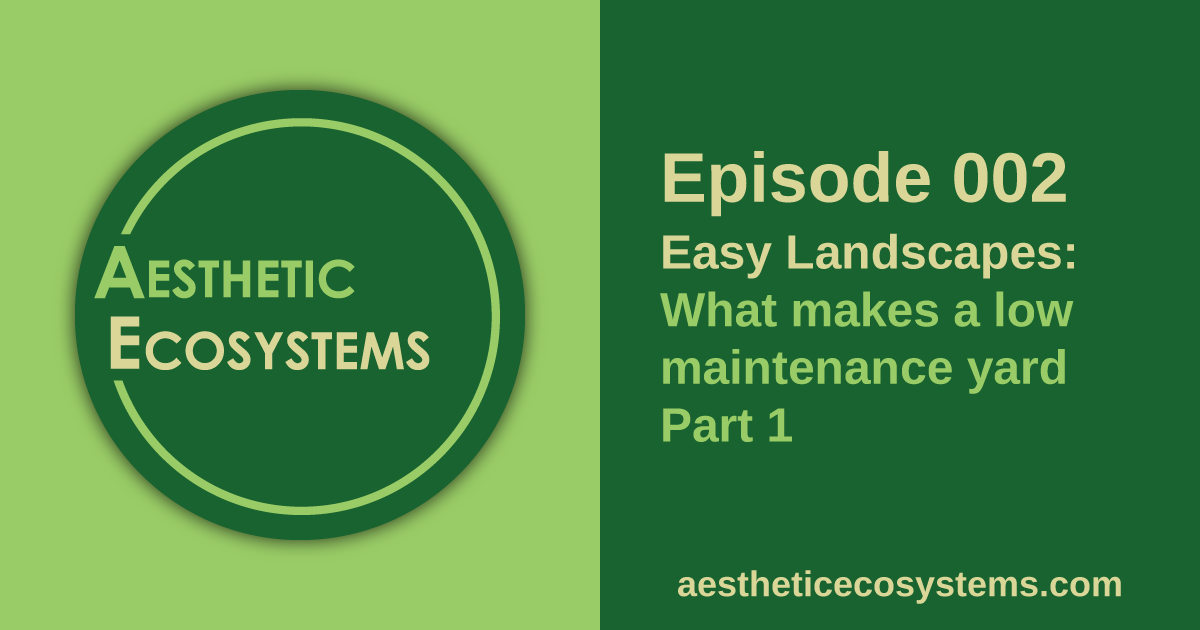
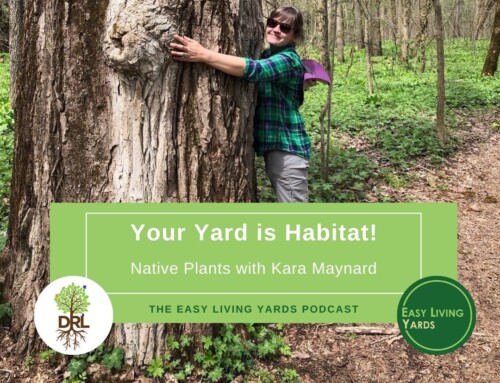

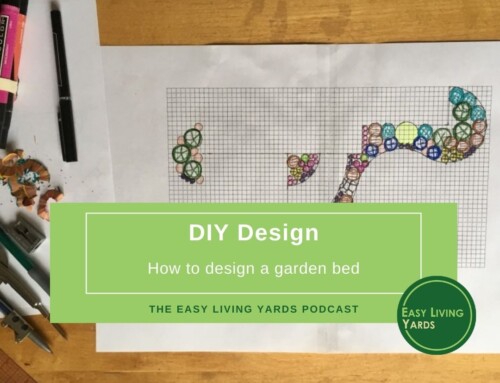

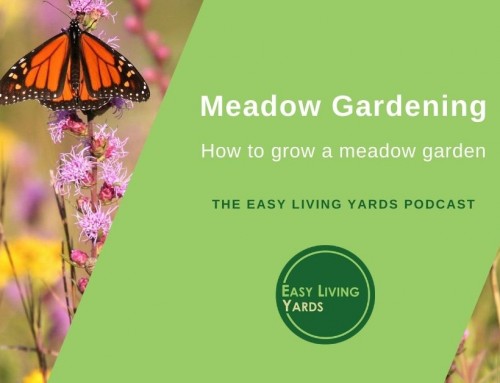
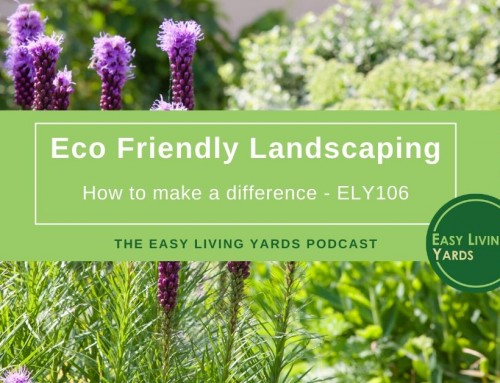
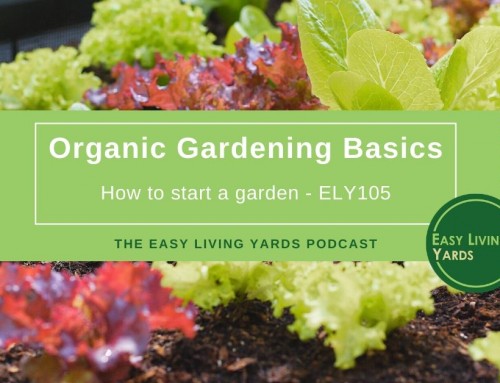
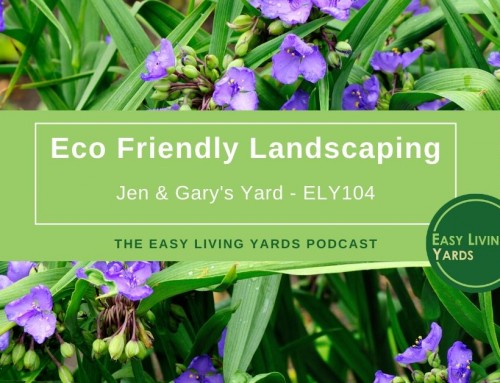
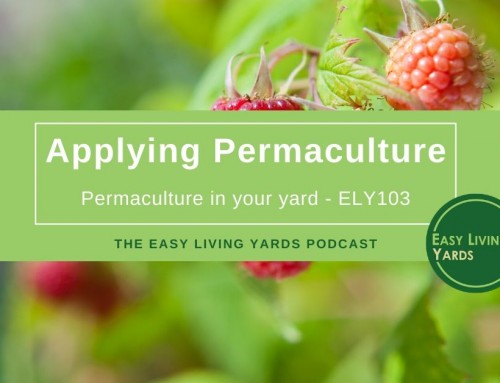
Leave A Comment